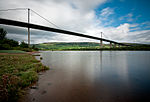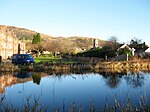Erskine (charity)

Erskine Veterans Charity is a veterans care and support non-profit organisation headquartered in Erskine, Renfrewshire, but operating across the Central Belt of Scotland. It provides a range of services to British Armed Forces, veterans of all ages and their families, who live in Scotland. It is most renowned for long-term nursing, respite, dementia and end-of-life medical care. It supports veterans through care homes and a Veterans Village, comprising 44 cottages, a community activity centre, five assisted living apartments and 24 "Transition Support" apartments for service-leavers and working-age veterans. The charity first established itself as Princess Louise Scottish Hospital for Limbless Sailors and Soldiers. It was created through Scotland's compassionate response to her sons returning physically and mentally shattered by the horrors of trench and naval warfare in the First World War. Its name was then shortened to Erskine Hospital and then simply "Erskine" in later years. The charity has gone on to offer help to British veterans of every subsequent war and become the biggest veterans facility in the country.
Excerpt from the Wikipedia article Erskine (charity) (License: CC BY-SA 3.0, Authors, Images).Erskine (charity)
Princes Park,
Geographical coordinates (GPS) Address Nearby Places Show on map
Geographical coordinates (GPS)
| Latitude | Longitude |
|---|---|
| N 55.9171 ° | E -4.4777 ° |
Address
Princes Park
PA7 5QA , Bargarran
Scotland, United Kingdom
Open on Google Maps









